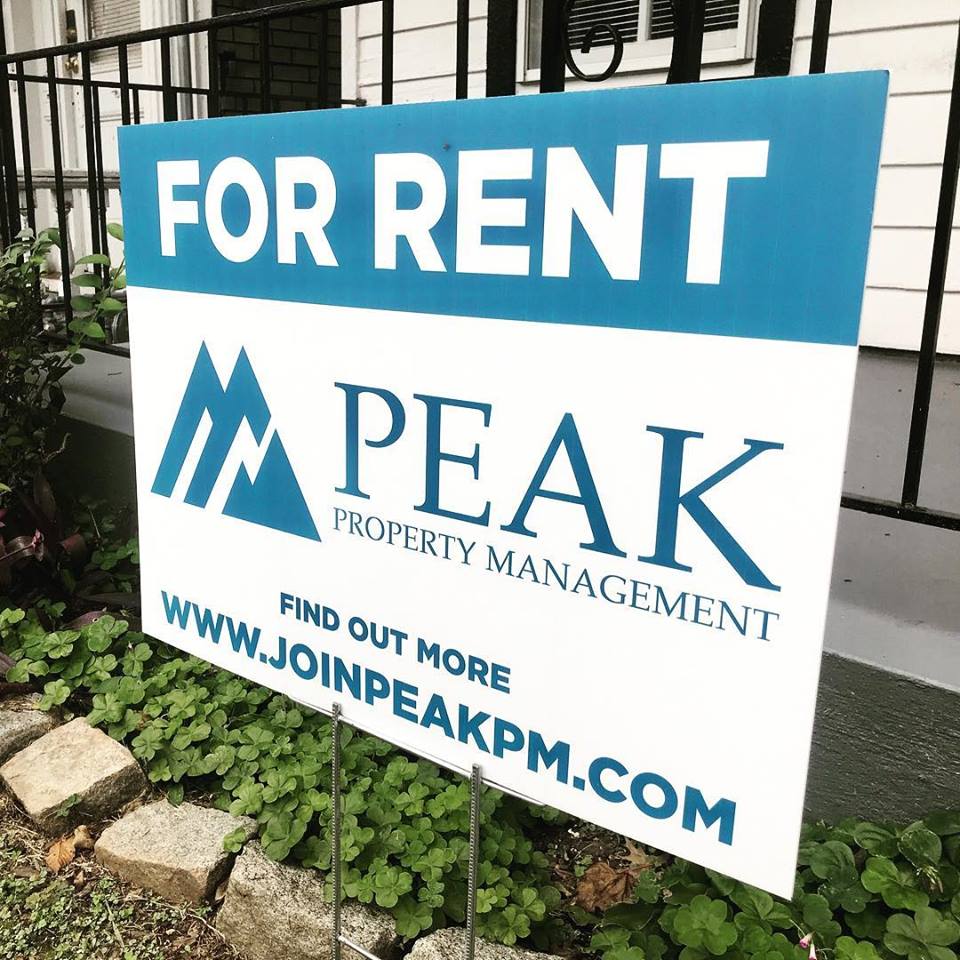Owning a successful investment property takes a lot of time and effort. A product of that time and effort is experience, and experience is valuable! If you own a rental home and have experienced long vacancies and dread tenant turnover, this blog post is for you! We will layout the keys to an efficient leasing experience below.
1: ANALYSIS: INSPECTION AND RENT
The first step in the leasing process is to inspect your home. Do any repairs need to be made for the incoming tenant to live in a clean, healthy environment? Take note of this before you home becomes vacant, and have subcontractors ready to move as soon as they have access to the home. If you are able to complete some of the tasks before the tenant moves out, go for it!
Once you’ve inspected the property and have it in rent-ready shape, you’ll have a better idea of what it’s value is. This is not the time to get greedy, but to do real analysis of the current market in your area. Look at similar homes, or use the Peak Property Management Free Rental Analysis system. Using online rental home listing sites will allow you to see what your competition is, and how long it’s been listed at that cost! You want the rent cost set appropriately for the time of year, too.
2: MARKETING
You have the home in good shape, and the right rent set. It’s time to list your property online. You can use sites like Craigslist or Zillow, or hire a property manager to list your property on 20-30 rental sites. Take the time to take pictures using plenty of light, arrange them in order that you would walk through the home, and take more pictures than necessary. If people are confused by the pictures, they will keep scrolling.
Throwing in a quick walk-through marketing video for your rental property will give prospective tenants the ability to walk through your home virtually, saving you time from showings and leaving the showings to serious inquiries only who wish to see it in person.
In your marketing description, avoid listing fees and charges, and talk about the experience of living in the home more than the raw details of the home itself.
3: SCREENING
You’ve now collected some applications and it’s time to screen the tenants. By now, you’ve met them at the showings and hopefully you’ve developed a relationship with them. You must be sure to follow all Fair Housing Laws and you cannot discriminate based on certain factors. Property Management companies typically will look at three factors in a tenant: Credit Score, Renter History, and Background Check.
In addition to these three main factors, the owner may or may not accept certain types of pets due to the homeowners insurance policy or personal preference. This is the right time to discuss these things to see if the pets will be allowed. Meeting the pet is a bonus. Having an unfriendly pet in your house will slow down the inspection and maintenance process when that time comes and could present a safety, and liability issue.
4: LEASE NEGOTIATION
Remember, a lease doesn’t have to be 1 year or 2 years. You’ll want the lease to end at a good time of year to find new tenants. Depending on your market, this could be year round, but usually it is in the Spring away from national holidays.
If you are leasing the rental home in the Winter, try a 1 year and 4 month lease. This helps the tenant as well as the owner. If they do not renew, they will have more inventory to choose from whether they are buying or selling. A win-win for both parties!
Aside from the term, an annual rent escalation clause or addenda can be added to suit your specific situations or negotiations as well. Always have these checked by an attorney to be sure it is legal and fair for the tenant.
5: MOVE-IN
When the move-in date comes you’ll have the opportunity to walk through the unit with the tenant. Take pictures and video, and review the condition of the unit with the tenant. Make sure all appliances are working, and show the tenant how to operate all of the home’s systems.
After the walk through, share the walk through findings with your tenant in writing or as described by your lease. Both parties should be on the same page from the start regarding the condition of the home for a good experience to follow.
Following these 5 quick and easy home leasing tips will provide a path to faster leasing processes and lower vacancy rates. If an owner or management company provide overwhelming attention and care to a vacant property, they will get rented faster. It’s that simple!











